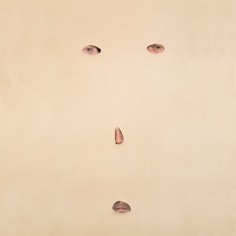ANNE DE VRIES
source: freecondomproject
Born in the Hague, Anne De Vries lives and works between Amsterdam and Berlin. He has exhibited extensively throughout Europe and has work held in various collections, including a recent acquisition by Winterthur Fotografie Museum, Swiss and Foam, Fotografie Museum, Amsterdam.
“In general my work as a directing photographer is the realization of thoughts in reality. By creating staged images with common everyday objects and removing them from their original context and stylizing it, the artificiality of the mundane gets emphasized by reducing a staged scene into a two dimensional image and then photographing it. The image becomes further removed from a dominant physical presence and allows the focus to shift more to the codes and spells that these tableaus evoke. These images are meant to exploit the visual and iconographic potential of the common world as a language. Although this language is often deluding it also can be very direct at the same time. The subjects are often stripped of any excess information until one images remains, at times appearing like an illustration of something unknown, recognizable in its form, but not necessarily in its content. My aim in my work is not to represent, but to reveal by representing the ordinary, framed in a way which often refers to the illusionary world of commerce and fashion, to induce a shift in recognizable conventional codes of our visual culture. Dealing in the banalities of the real world while suggesting a hidden, alternate one. Constructing a scene that triggers, a layered reading functioning as a document of reality and a portal to the imagination.” Photo Statement, 2008, by Anne De Vries.
.
.
.
.
.
.
.
source: visionfield
The idea of photography as a way to experience the world as it is not – in different ways – is fascinating to me, transforming the known into an unknown.” So says Dutch photo artist Anne de Vries, and looking at the wealth of ideas and experimentation on show in the work you can see he’s a man of his word. Whether playing with overlaid identical images which he cuts sections out of, thus revealing more of the same image on different deeper levels, or photographing the reflection of cave paintings in wrinkled aluminium foil, de Vries is out to see how far can an image be pushed whilst leaving it readable. He takes great delight in finding ways of subverting apparently straightforward images, as with the impossible flora in ‘Plan’ or the melting saccharin junk food in ‘Eye Candy’.


